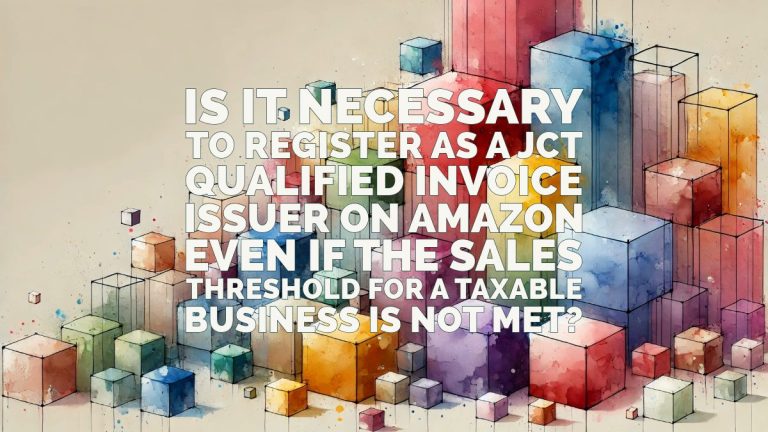This FAQ Focuses on Topics Related to Year End Mark-to-Market of Cryptos for Corporation Tax Purposes
On January 20, 2023, the National Tax Agency (NTA) published a guidance titled “Year End Mark-to-Market Treatment of Cryptocurrencies Held by Entities (Information)”.
The NTA has been releasing Crypto Tax FAQs every year since 2017.
This FAQ (M-t-M FAQ) is unique in that it covers only corporation tax, specifically, topics over year end mark-to-market measurements.
Table of Contents
There are six topics covered in this M-t-M FAQ.
Can’t help but notice terms that caught on around the year 2020 such as DEXs and staking.
| No | Item |
|---|---|
| 1 | Year end mark-to-market of crypto assets |
| 2 | Crypto assets that are subject to mark-to-market that trade in an active market |
| 3 | Crypto assets that are traded on DEXs |
| 4 | Mark-to-Market of crypto assets that are locked for staking |
| 5 | Mark-to-Market of crypto assets that are being lent |
| 6 | Mark-to-Market of borrowed crypto assets |
The reason why this FAQ is labeled as “information” is because it is not a law or regulation, but rather the view of the NTA.
Although it is not a law, the tax authorities in Japan will refer to this document when verifying the validity of tax calculations regarding crypto.
In practice, I expect various accounting and tax treatments to be based on this FAQ.
This hasn’t changed from Version 1.
Our comments will be inserted using blue text, and the rest is the original content of the FAQ.
The official document can be obtained at the following link:
法人が保有する暗号資産に係る期末時価評価の取扱いについて(情報)
1 Year end mark-to-market of crypto assets
Question
Our company held crypto assets as of year end.
Is there any tax treatment that is required at year end?
Answer
An entity must measure its crypto assets (those that are actively traded on a market, referred to as “market crypto assets” in this question) at the end of its fiscal year using the fair value method.
If the corporation holds market crypto assets on its own balance sheet, the difference between the fair value and the book value (referred to as the “mark-to-market gain or loss” in this question) must be included in the amount of profit or loss for that fiscal year.
The mark-to-market gain or loss will be reversed in the following fiscal year.
The fair value is calculated by multiplying the quantity of the market crypto asset by one of the following:
- The final trading price of the market crypto asset as published by a price publisher on the last day of the fiscal year (if no such price is published on that day, the last trading price published before that day closest to the last day of the fiscal year)
- The final exchange rate of the market crypto asset as published by a price publisher on the last day of the fiscal year multiplied by the final trading price of the other market crypto asset exchanged at that rate (if no such exchange rate is published on that day, the last exchange rate published before that day closest to the last day of the fiscal year)
(Note) A crypto asset with an active market is defined as the cryptocurrency that an entity holds that meets all of the following criteria:
1 The selling price and other information (Note 3) is continuously published and has a significant impact on the determination of the selling price or exchange ratio of that crypto asset.
(Note 3) Selling price and other information refers to the selling price or exchange ratio with other crypto assets
2 There is a sufficient amount and frequency of transactions for the continuous publication of the selling price and other information mentioned in 1.
3 Meets one of the following requirements:
(a) The publication of the selling price and other information mentioned in 1 is done by the entity.
(b) The transactions mentioned in 2 are primarily not conducted by the entity on its own account.
[Related laws and regulations, etc.]
Corporate tax law 61
Corporate Tax Law Enforcement Ordinance 118-7, 118-8, 118-9
For reference
In the tax system revision for fiscal year 2023 (decided by the cabinet on December 23, 2022), it is stated that the following changes will be made to the method of measuring crypto assets, including the scope of assets for which mark-to-market gains and losses are calculated using the fair value method.
The details of these changes will be clarified in future legislation.
1 Exclude crypto assets that meet the following criteria from the scope of assets for which mark-to-market gains and losses are calculated using the fair value method at the end of the fiscal year:
A assets that an entity has continuously held since issuance,
B assets that have been continuously subject to transfer restrictions since issuance through either:
(a) technical measures that prevent transfer to others, or
(b) being held as trust assets that meet certain requirements.
2 The acquisition cost of self-issued crypto assets will be considered the cost incurred for issuance.
Our comments:
The mark-to-market measurement of crypto assets held by entities first appeared as a FAQ item in the “Tax Treatment Crypto Currencies (Information)” (Version 3) published by the National Tax Agency on December 20, 2019.
For income tax on individuals, there is no taxation on unrealized gains (losses).
However, for corporate tax purposes, unrealized gains (losses) for crypto assets are considered taxable, creating a significant gap in tax treatment between the two.
Unrealized gains (losses) have no cash backing, as they are not realized.
It will be difficult to make a convincing argument on why unrealized gains should be taxed.
Yes, I understand that the tax treatment is consistent with that for securities held for trading purposes.
But crypto assets are not just held for trading purposes only.
Taxation on unrealized gains (losses), without considering the purpose of the asset, creates significant issues in two ways:
First, it hinders the business activities of businesses.
Businesses hold crypto assets for various reasons.
One reason is to protect excess cash from inflation policies implemented by the government and central banks, and to preserve the financial strength of its balance sheet.
Companies such as Microstrategy, Square, and Tesla hold bitcoin for this purpose.
Another reason why corporations hold crypto assets is that it may be necessary for their business activities.
There are various situations, but here are two examples:
The first example is a business that provides services using smart contracts.
Smart contracts are programs executed on the blockchain.
Typically, crypto assets are required to execute these programs.
Businesses that provide services using smart contracts need to execute the program on a daily basis, and therefore need to hold crypto assets.
Here is the second example.
The emergence of the Lightning Network has greatly reduced the time and cost of sending bitcoin.
Now, it is possible to send bitcoin to anywhere in the world almost instantly and at minimal cost, even in units less than one yen.
This has led to the emergence of micro-payments, services that rely on billing and paying per second.
With the advent of these services, creators now have alternative ways to generate revenue other than through advertising.
To use these services, one must continue to hold a certain amount of crypto assets.
Businesses that hold crypto assets for business reasons must hedge against the tax exposure that arise from mark-to-market taxation.
This can be done through purchasing derivative contracts, but it also increases costs, administrative burdens, and introduces additional counterparty risks.
The second significant issue is that it significantly reduces the efficiency of funds.
Profits should be reinvested to generate compound interest, but taxing unrealized gains greatly reduces the efficiency of funds.
It is generally considered to be not fair tax treatment to favor a certain entity structure over another, and creating that regulatory arbitrage may lead to distorted management decisions and unintended consequences.
Improving the efficiency of funds is crucial for economic growth, and as a result, it also increases tax revenues.
Taxing unrealized gains (and losses) is problematic from this point of view.
2 Crypto assets that are subject to mark-to-market that trade in an active market
Question
What is considered a crypto asset with an active market for the purpose of mark-to-market measurement at year end?
Answer
A crypto asset with an active market refers to a crypto asset that is owned by an entity and meets all of the following criteria.
1. The trading price and other information (note) are continuously published, and they have a significant impact on determining the trading price or exchange ratio of the crypto asset.
Note: trading price and other information refers to the price of trading or the exchange ratio with other crypto assets.
2. Sufficient quantity and frequency of transactions are continuously carried out for the publication of the trading price and other information in 1.
3. Meets one of the following requirements:
A. The publication of trading price and other information in 1 is done by someone other than the entity.
B. The transactions in 2 are mainly those that were not carried out by the entity on its own account.
Whether a certain crypto asset trades in an active market depends on the type of crypto asset held, its past trading history, and the situation of the crypto asset exchange or sales platform on which it is traded.
This judgment must be made based on the actual condition of each crypto asset.
For example, if there is a significant difference in purchase and sale prices that can be obtained within a reasonable range among crypto asset exchanges or sales platforms, or if the price difference desired by the seller and buyer is significantly large, it is usually judged that the market is not active from the perspective of 1 and 2.
Also, the above third criteria is established in order to exclude such prices from the scope of fair market value from the perspective of corporation tax, because such prices, if they are created and manipulated by the person who publishes the purchase and sale prices etc. based on the transactions conducted mainly by himself/herself, can result in profit adjustments.
Therefore, in the case of a crypto asset exchange operator, if there are purchase and sale prices etc. other than those of the crypto asset exchange or sales platform operated by the operator for a certain crypto asset, that crypto asset will fall under the third criteria mentioned above.
Also, even if purchase and sale prices etc. of a certain crypto asset are published only on the crypto asset exchange or sales platform operated by the operator, if those prices are mainly based on transactions conducted by others (via intermediaries or agency), that crypto asset will fall under the third criteria mentioned above.
[Related laws and regulations, etc.]
Corporate tax law 61
Corporate Tax Law Enforcement Ordinance 118-7
Our comments:
Most cryptocurrencies have low trading volume and do not have enough liquidity to be considered an active market.
The trades that can be seen flickering on an exchange’s trading screen are mostly those that are placed by service providers called LPs (Liquidity Providers) or MMs (Market Makers).
If one tries to sell a large amount of coins that the market has no appetite for, the LP or MM will cancel their order, resulting in significant slippage, which will be a loss for the seller.
Among cryptocurrencies, BTC is the most liquid by far.
But even with bitcoin, the Japanese market can only handle a few billion yen within a 2% spread.
In our view, it is reasonable to reflect an appropriate liquidity discount (DLOL) when performing mark-to-market adjustments at the end of the period.
3 Crypto assets that are traded on DEXs
Question
The crypto asset A owned by our company is listed on a DEX (decentralized exchange).
On this DEX, the exchange ratio between the crypto asset A and market crypto asset B is made clear by an automatic market maker, and based on this clear exchange ratio, trades of the exchange between the crypto asset A and the market crypto asset B are conducted at any time.
In this case, will the crypto asset A be the subject of mark-to-market at year end under corporate tax law?
Answer
If crypto asset A is a crypto asset that trends in an active market, it will be subject to mark-to-market at the end of the period.
Under corporate tax law, a crypto asset with an active market refers to a crypto asset that is owned by an entity and meets all of the following criteria.
1. The trading price and other information (note) are continuously published, and they have a significant impact on determining the trading price or exchange ratio of the crypto asset.
Note: trading price and other information refers to the price of trading or the exchange ratio with other crypto assets.
2. Sufficient quantity and frequency of transactions are continuously carried out for the publication of the trading price and other information in 1.
3. Meets one of the following requirements:
A. The publication of trading price and other information in 1 is done by someone other than the entity.
B. The transactions in 2 are mainly those that were not carried out by the entity on its own account.
DEX, or decentralized exchange, is generally understood to be a trading platform without a central administrator.
The concept of a market is generally understood to include trading systems where buying and selling and exchanging can be done at any time.
In this case, the DEX in question has an exchange ratio for crypto assets that is made clear by an automatic market maker, and based on this clear exchange ratio, trades for the exchange of crypto assets are conducted at any time.
Therefore, this DEX can be considered within the scope of the market.
As such, as long as there are no special circumstances such as the exchange ratio published on this DEX being significantly different from that of other crypto asset exchanges, and as long as crypto asset exchange trades are continuously being settled on this DEX, the crypto assets traded on this DEX will be subject to mark-to-market at the end of the period as long as they meet the criteria 1-3 above.
Typically, in this case, the fair market value will be calculated by taking the final exchange ratio at the end of the fiscal year published by this DEX and multiplying it by the final trading price at the end of the fiscal year for the other crypto asset with an active market that is being exchanged at that exchange ratio.
[Related laws and regulations, etc.]
Corporate tax law 61
Corporate Tax Law Enforcement Ordinance 118-7, 118-8
Our comments:
Same comments as that for FAQ3.
The liquidity of crypto assets that only trade on DEXs is usually very low.
In such cases there could be a significant deviation from the spot price that is displayed and the price at which a trade is actually settled.
The pricing mechanism used by most DEXs is called AMMs (Automatic Market Maker).
Due to the mechanism of AMMs, spreads will widen as the size of the trade gets larger.
Also, blockchain transactions are constantly being monitored by third parties and large transactions will be subject to front-running and will likely settle at unfavorable prices.
This is commonly known as a “sandwich attack” and is a type of MEV (Miner Extractable Value).
The same thing occurs in traditional finance due to high frequency traders, but in terms of the ratio of siphoned profits to transaction amount, the impact is significantly greater for DEX transactions.
When making mark-to-market adjustments at the end of the period based on DEX price information, it is reasonable to reflect not only liquidity discounts (DLOL) but also costs such as MEV.
4 Mark-to-Market of crypto assets that are locked for staking
Question
The company owns cryptocurrency A, which is currently locked-up (a mechanism that prevents the transfer of cryptocurrency to a different party) in order to obtain rewards through staking.
Under this lockup, the company is unable to transfer the cryptocurrency A until specified conditions are met.
In this case, will the locked up cryptocurrency A be subject to mark-to-market at year-end for corporate tax purposes and is it necessary to include the mark-to-market gain or loss in the amount of profit or loss?
Cryptocurrency A is listed on a cryptocurrency exchange, with sufficient quantity and frequency of trades, and the trading price is continuously published.
The company is not operating the exchange and is not conducting trades of cryptocurrency A on that exchange.
Answer
According to the corporate tax law, the difference between the fair value and the book value of the crypto assets should be recorded as profit or loss at the end of the fiscal year.
When a corporation holds a crypto asset that has an active market, it should evaluate the asset using the fair value method and record the difference between the fair value and the book value as the profit or loss of the fiscal year.
In this case, the crypto asset in question is subject to lock-up, meaning it can not be transferred during the lock-up period, however, it is possible to earn staking rewards during that period.
Also, the company bears the risk of future price fluctuations of the crypto asset, it is considered to have the crypto asset in its own account.
In addition, in this case, the crypto asset A meets the specified criteria such as being continuously traded on an exchange with prices being published, it is considered to be a crypto asset with an active market.
Therefore, the company should evaluate the crypto asset A using the fair value method at the end of the fiscal year and record the difference between the fair value and the book value as the profit or loss of that fiscal year.
[Related laws and regulations, etc.]
Corporate tax law 61
Corporate Tax Law Enforcement Ordinance 118-7
Our comments:
The conclusion that the crypto asset in question is subject to mark-to-market is predicated on the fact that there is an active market for the asset.
This is probably not a conclusion that most people currently staking cryptocurrencies will instinctively arrive at.
The reason is because it ignores the purpose or intent of holding the assets in the first place.
Let’s look at Ethereum as an example.
Ethereum previously used the PoW (Proof of Work) consensus mechanism like Bitcoin, where miners generated blocks.
However, in 2022, Ethereum transitioned to Proof of Stake (PoS), where validators are responsible for block generation.
To become a validator, one must stake 32 ETH.
If a company staked 32 ETH to contribute to the Ethereum network, and at the end of the year, the price of ETH has gone up, the company would have to sell some of their ETH to pay taxes.
And as a result, they will no longer have 32 ETH and would be disqualified from being a validator.
For some assets, there are different tax treatments depending on the purpose or intent of holding the asset.
Stocks are an example of such assets.
Shares held for trading purposes are subject to mark-to-market taxation, while investment purpose shares and subsidiary shares stocks are not, as they are held to exert influence on the investee company, not for short-term trading.
In our view, crypto assets should also be treated in a similar manner, considering the purpose of holding them, in order to ensure consistency with existing tax treatment and also to prevent unintended consequences of tax rules hindering business practices.
5 Mark-to-Market of crypto assets that are being lent
Question
Our company has lent crypto asset A, which we own, in order to earn usage fees.
Regarding this crypto asset A, we are unable to transfer it until the lending period ends.
In this case, will crypto asset A that our company is lending be subject to mark-to-market under corporate tax law and will it be necessary to include the mark-to-market gain or loss in the amount of profit or loss?
Crypto asset A is listed on a cryptocurrency exchange, with sufficient quantity and frequency of trading and continuous disclosure of trading prices.
Additionally, our company does not operate that cryptocurrency exchange and also does not trade in crypto asset A on that exchange.
Answer
Under corporate tax law, it will be necessary to include the difference between the fair value and the book value as the amount of profit or loss.
When an entity has crypto assets for which an active market exists at the end of the fiscal year, the amount evaluated by the fair value method shall be the fair value at that time, and the difference between that fair value and the book value shall be included in the amount of profit or loss for that fiscal year.
In this case, while the entity has lent the crypto asset it owns, it is able to earn usage fees during the lending period.
Furthermore, as the entity bears the risk of future price fluctuations of this asset, it can be considered that the entity has the assets in its own account.
In addition, in this case, crypto asset A meets the specified criteria such as continuously disclosed trading prices, etc.
Therefore, it is considered a crypto asset with an active market, and it is necessary for the entity to include the difference between the fair value evaluated by the fair value method and the book value at the end of the fiscal year as the amount of profit or loss for that fiscal year.
[Related laws and regulations, etc.]
Corporate tax law 61
Corporate Tax Law Enforcement Ordinance 118-7
Our comments:
Same comments as the other sections.
When lending crypto for long durations, it will be prudent to consider tax planning and hedging strategies to avoid any unintended tax exposure at year end.
6 Mark-to-Market of borrowed crypto assets
Question
Our company borrows cryptocurrency A from parties other than cryptocurrency exchange operators and earns revenue by lending it out or using it in other ways during the borrowing period.
In this case, will cryptocurrency A that our company has borrowed be subject to mark-to-market under corporate tax law and will it be necessary to include the mark-to-market gain or loss in the amount of profit or loss?
Additionally, cryptocurrency A is listed on a cryptocurrency exchange, with sufficient quantity and frequency of trading and continuous disclosure of trading prices.
Furthermore, our company does not operate that cryptocurrency exchange and also does not trade in cryptocurrency A on that exchange.
Answer
Cryptocurrency borrowed by the company may be subject to mark-to-market under corporate tax law, but it is not necessary to include the difference between the fair value and the book value in the amount of profit or loss.
When a company holds cryptocurrency with an active market at the end of a fiscal year, the fair value assessed under fair value method should be the fair value at that time, and if the company holds the cryptocurrency in its own account, the difference between the fair value and the book value should be included in the amount of profit or loss for that fiscal year.
The concept of “hold” here is a broad one that encompasses those that do not become the subject of ownership, and considering the fact that the company borrowing the cryptocurrency has the power of disposition of the borrowed cryptocurrency, it may be considered that the company holds the cryptocurrency.
In this case, cryptocurrency A satisfies the specified criteria such as continuous disclosure of trading prices, etc., and is a cryptocurrency with an active market, and if it is considered that the company holds cryptocurrency A, the fair value assessed under fair value method should be the fair value at that time.
However, considering that the company does not bear the risk of future price fluctuations of the cryptocurrency A that requires return, in general, it can not be said that the company holds the cryptocurrency A in its own account, therefore, the difference between the fair value and the book value does not need to be included in the amount of profit or loss for that fiscal year.
[Related laws and regulations, etc.]
Corporate tax law 61
Corporate Tax Law Enforcement Ordinance 118-7
For reference
The tax reform outline for fiscal year 2023 (decided in cabinet on December 23, 2022) states that when an entity sells crypto assets borrowed from a party other than a crypto exchange operator, and has not repurchased assets of the same kind by the end of the fiscal year in which the sale took place, the profit or loss equivalent amount calculated as if the repurchase had been made at that time will be recorded.
The details will be clarified in future laws and regulations.
Our comments:
The reference information is concerning.
When borrowing in crypto and then converting it to cash or other assets, exposure still remains regarding the borrowed crypto.
Let’s look at some journal entries as an example:
Assumption: Crypto value at the time of borrowing is 100, crypto value at year end is 150
If the crypto is converted to yen at the same time it is borrowed:
1 Journal entry at the time of borrowing:
Crypto 100 Liability 100
2 Journal entry at the time of converting to yen:
Cash 100 Crypto 100
3 If the crypto value at the end of the term increases, the following journal entry is needed to increase the amount of the borrowed crypto:
Mark-to-market loss 50 Liability 50
As per FAQ5, the lender will make the opposite journal entry and the liability (of the debtor) and asset (of the creditor) reconcile.
4 Lender’s journal entry
Asset 50 Mark-to-market gain 50
However, according to the outline of the tax system revision for 2023 (decided by the cabinet on December 23rd, 2022), if the crypto is not bought back by the end of the period, the profit or loss equivalent calculated as if it had been bought back must be recorded.
As the details are unknown, the exact journal entry that is required is unknown at this time, but a possible one would be as follows:
5 Journal entry assuming the crypto is bought back at the end of the period:
Crypto 150 Gain from assumed buyback 150
In the journal entry 3, a mark-to-market loss of 50 was recorded, resulting in a net profit of 100.
Entry 5 will be reversed when the buyback is actually made in future periods, and recognized as an expense at that time.
6 Journal entry when actually buying back the crypto (assuming the value of the crypto has further increased to 200):
Gain from assumed buyback 150 Crypto 150
Crypto 200 Cash 200
7 Journal entry for repayment of the loan at the same time:
Mark-to market loss 50 Liability 50
Liability 200 Crypto 200
In summary,
When there is no need to deem a repurchase (current treatment), the effect on annual taxable income for Years 1 and 2 are as follows:
Year 1: 50 loss
Year 2: 50 loss
Total: 100 loss
In the case where there is a deemed repurchase, the effect on annual taxable income for Years 1 and 2 are as follows:
Year 1: 100 gain
Year 2: 200 loss
Total: 100 loss
The former is in line with the tax treatment of the lender.
For the second one where there is a deemed repurchase, the asset of the creditor and liability of the debtor will not reconcile, indicating an inconsistency in treatment for a lender and borrower.
The purpose of the requirement for deemed repurchase is unknown at this time.
Considering the consistency with the tax treatment of the lender and the burden of additional administrative procedures, in our view, it seems that the change is unnecessary and the existing tax treatment suffices.
Summary
The common theme that keeps coming up in this FAQ is the lack of consideration over the purpose and intent of holding crypto.
Accounting and tax treatment should aim to accurately reflect the reality and substance of transactions.
To achieve that objective, consideration of the purpose of holding is essential.
Tax rules may require a certain degree of formalization to eliminate discretion, that is true.
In the case of stocks, there is a framework that is used to reflect the intent of the holding when considering tax treatments.
There is no reason not to apply a similar framework to crypto.
Improving productivity through the use of new technologies is essential for economic growth that makes people’s lives better.
If one applies this FAQ to practice, it is likely that it will lay unnecessary burden on businesses that use crypto, and that the negatives outweigh the positives.











